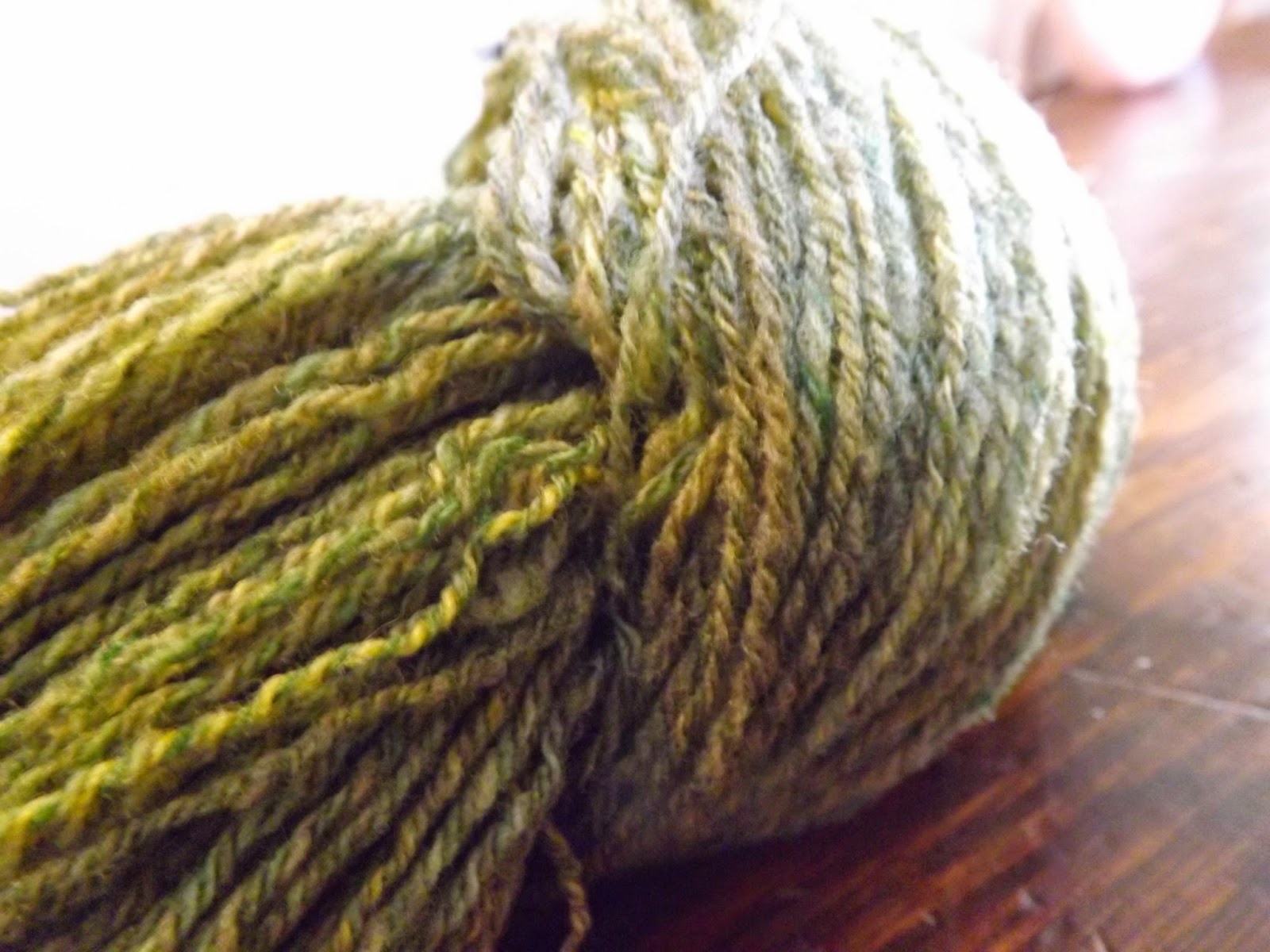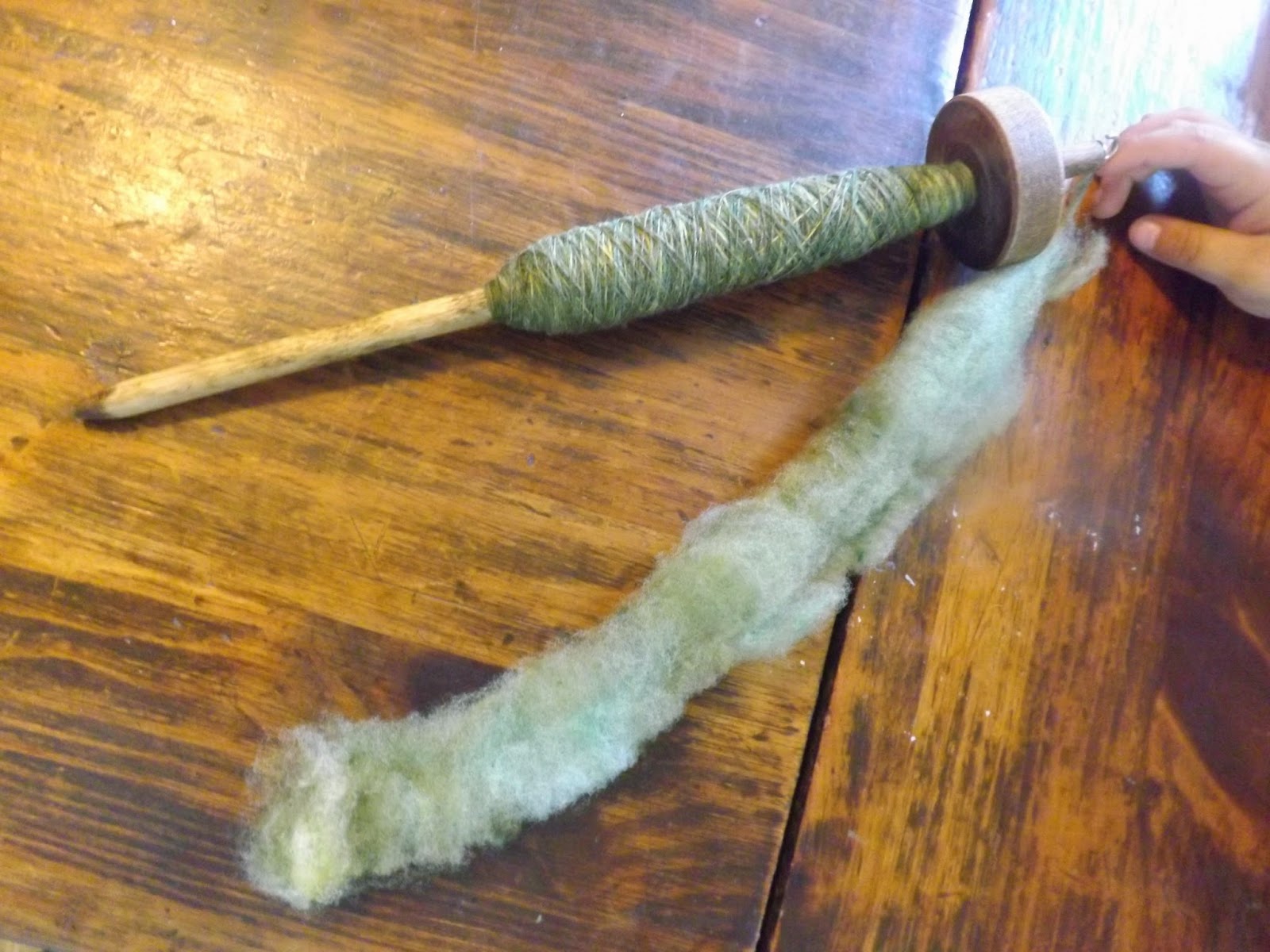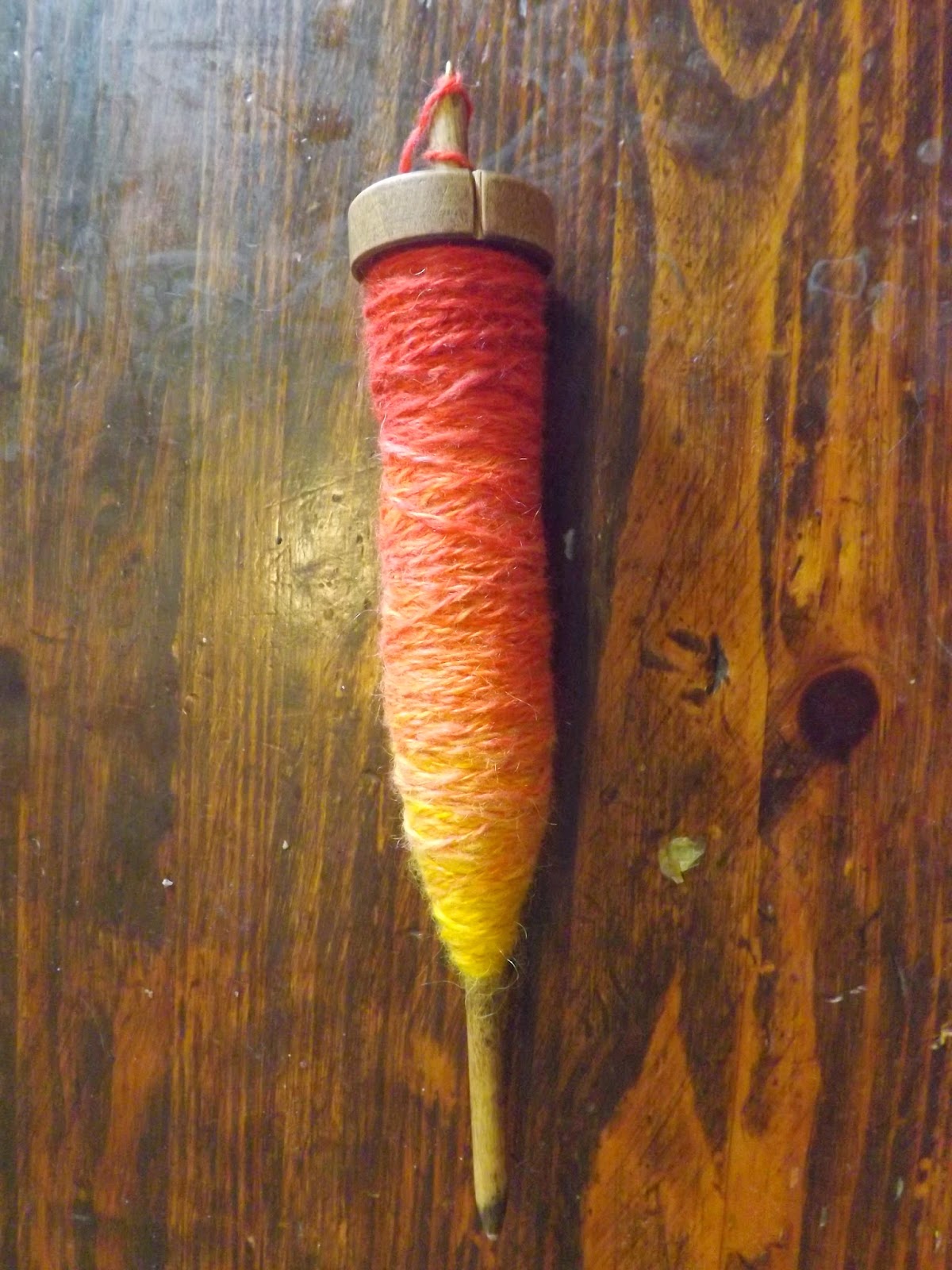Once I'd learned to spin, I needed more wool in a hurry. And I wanted a lot of it. I was addicted to spinning and didn't want to have to stop again for lack of wool!
So I went to a fiber festival. Of course I went to see the sheep and the llamas and the blown-glass spindles and everything .... but my main goal was to walk out of there with the maximum amount of wool I could afford. I figured the smart thing was to buy raw wool, because I would be able to buy more of it.
That is more or less true. You can get raw wool usually for a cheaper price per ounce than roving or rolags or batts. However, the price of wool varies a lot, especially depending on where you're getting it. A whole fleece direct from a farmer near you is likely to be cheaper than 4 ounces of raw wool bought on Etsy. And the number of ounces you buy of raw wool might not be the number of ounces you end up with after washing and carding. A whole fleece may need to be skirted -- that is, the grossest bits will have to be thrown away altogether. And then the fleece gets washed, losing some weight in lanolin. And finally some fuzzy bits will stay in your combs or carders. There's no strict formula for how many ounces you'll get, so it's impossible to see if you're making a deal until you've spun the wool. It might be, after all that work, that roving was cheaper!
So perhaps a more useful factor in the decision-making process is, do you actually want to process the wool or not? If you process it yourself, do you want to buy tools (cards or combs) to do it? Is there something specific you want to do (like special dyeing and blending) or are you happy with fiber you can find already prepared? Another important question is, what can you find that is an actual good market price? If all the roving you see is on sale and the raw wool is overpriced, well, that helps make up your mind too.
The more you buy and spin, the better you're able to judge what's good quality and what will give you more trouble than it's worth. You learn what a good fleece looks like, and what is a dirty fleece that you're going to have to throw out half of. You learn what good roving looks like and what's carelessly done and may need to be done over. And, of course, you learn what a decent price for each is likely to be.
Well, I didn't know any of that, so I just cruised through the festival and touched everything, trying to figure out the very softest wool for the lowest price. I ignored dyed and naturally colored wool, because I wanted to dye it, though perhaps this was a mistake -- black, gray, and brown wool is often cheaper and it's great to learn on. And the natural colors have a lovely amount of variation that turns out very nice in the finished product. I also ignored llama, alpaca, and camel, although they were cheaper, because I wasn't sure if they would be soft and easy to spin. I finally settled on Cormo, which is a cross between Corriedale and Merino, because I found it at a good price, sold in bulk (they let me just pull what I wanted from a bag and buy it by the ounce), and ridiculously soft.
I didn't know that the softer wool is, the shorter the staple length, and therefore the more careful you have to be not to break your yarn and drop the spindle. This stuff had only a 3 1/2 inch staple, so it was a real challenge. I had to spin it thicker than I had with the Icelandic. I also didn't know something I overheard in a forum months later -- "Cormo felts if you even look at it wrong. Don't even THINK the word 'felting' while washing Cormo, or it will just to spite you." Alas, how true those words were.
I read up on how to wash wool -- very hot water, Dawn dish soap, no agitation, lots of changes of water, and a constant temperature with no sudden shifts. But when I did all that, it still stayed greasy. I was buying wool in September, so presumably it had been shorn months ago -- the lanolin was hardened on and hard to remove. So I cheated and stirred it around a bit and tried to rub it a bit -- which is what you should never do! Sure enough, that batch (thank goodness I was washing it in batches instead of all at once!) turned tangly, sticky, and clumpy .... in short, it had felted rather a lot. I managed to spin it anyway, but quite a few clumps had to be thrown out.
I had a revelation, thinking about how my laundry never gets that clean either, and realized the problem was likely my hard water. Sure enough, when I collected some rain water and used that, I had much better results. It's rather a hassle, but I've made it my standard procedure now. Better to wait for a rainstorm and fill up a big stockpot of rainwater than face wool that never gets clean. I've also learned that there is a point that is clean enough ... quite a bit of the dirt comes out in the processing, not the washing. And last of all, you don't want to overcrowd the wool as you're washing it -- if it can't expand in the container, it won't release all its dirt. I had the problem of dirt coming out of the wool on top and just sticking to the wool at the bottom of the pot, so now what I do is wash the wool in the pasta insert of my big pot. I pull the wool out of the pot, dump the dirty water, add fresh, and put the wool (in the insert) back into the pot. That way the dirt settles to the bottom without reattaching to the wool, and I can change the water easily without touching or stretching the wool.
That did work a great deal better, and the rest of the bits of dirt and hay came out later.
I dyed the wool with food coloring, which didn't turn out quite as I expected. It turns out that red and yellow, which I'd done before, take pretty easily, whereas blue, which I did this time, doesn't. It needs more vinegar, more heat, and more time than the other colors. I also suspect that my wool was still a bit greasy, keeping it from holding the dye as well as it should have. So I ended up with a very light, uneven blue .... but it was lovely all the same.

The next challenge was to find a substitute for combing or carding it, because I didn't have any supplies and couldn't afford to buy any. This, at least, was simple enough -- you can just pull the locks apart with your hands, letting vegetable matter fall out, and then arrange them how you like. For worsted spinning, you keep the fibers parallel, and for woolen, you make a perpendicular batt of them and then roll it up. I just arranged the fibers on a piece of flannel so they didn't wander around. It was admittedly pretty time-consuming, but if you are obsessed with spinning and on a budget, it's doable. And it's what the ancients did, so far as we know -- spindles were in use for thousands of years for anything we can identify as a comb. Though I must say, when I had a friend lend me some carders, my pace about doubled.
So, it's safe to say that I was not ready for raw Cormo. Still, the yarn I got was gorgeous. Not very even, but ridiculously soft and squishy, especially after I'd washed it. This is the stuff for scarves, wrist warmers, ear warmers -- anything where softness and thickness is desired.
I did worsted first, but after awhile I realized that something this soft and short-stapled really would go better with woolen. Unfortunately there are not a lot of instructional videos showing woolen spinning on a spindle. There are no end of them on a wheel, but it's unclear how you're supposed to support the weight of the spindle with the half-spun yarn you're making.

The trick, it turns out, is to use your lower, spindle hand (for me, it's the left) to hold the spindle's weight and to transfer the twist steadily from the lower, finished yarn below your hand into the upper, half-spun yarn above it. Then your fiber hand (my right hand) slowly stretches backward. It seems at first that you have no control over how thick your yarn ends up, and you get a lot of thick and thin bits. But after awhile I learned that I could control the thickness by carefully synching up how fast I pulled back with my right hand and how much twist I was pushing into the yarn with my left. But really all I can say is, it takes practice!
My "big project" for this yarn was a woven scarf for my mother. I made it on my Ashford SampleIt 8-inch loom. Let me tell you, it took a lot less time to weave it than it did to spin!
 There's a lot of details you want to get right about sock yarn. It has to be strong, if you don't want your socks to wear out, but it should also be somewhat elastic. For this reason, semiworsted spinning is often preferred. Blue-faced Lancaster is one popular wool for sock yarn; others prefer superwash or one of the felt-resistant down breeds like Devon. I only had Rambouillet, so that's what I used.
There's a lot of details you want to get right about sock yarn. It has to be strong, if you don't want your socks to wear out, but it should also be somewhat elastic. For this reason, semiworsted spinning is often preferred. Blue-faced Lancaster is one popular wool for sock yarn; others prefer superwash or one of the felt-resistant down breeds like Devon. I only had Rambouillet, so that's what I used.






















